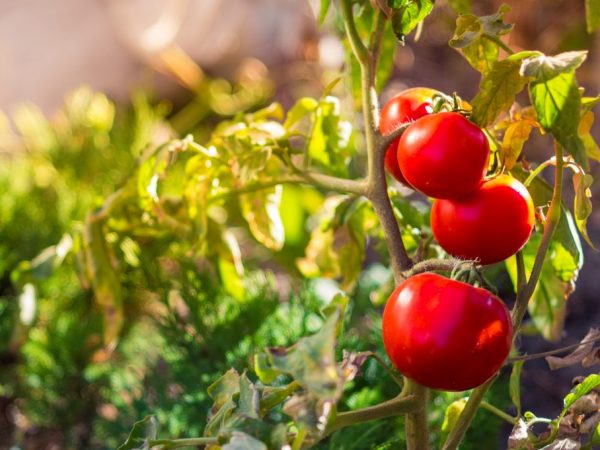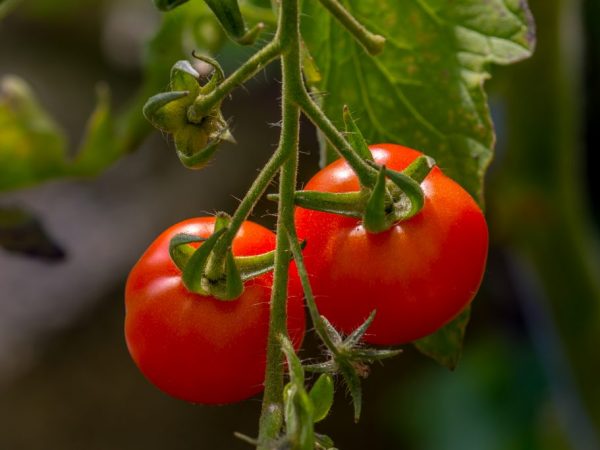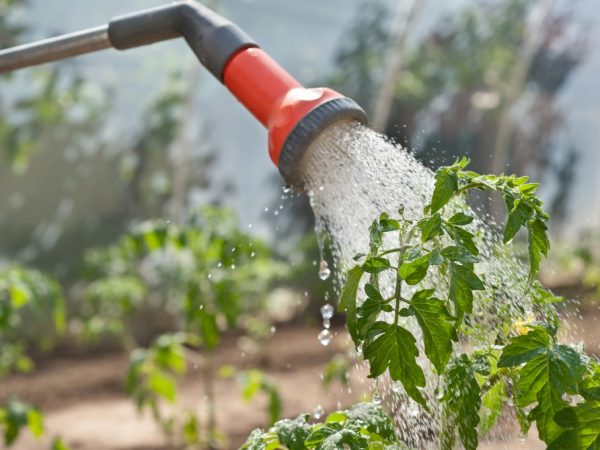Description of Dubok tomatoes
Bred in Russia in our century, the Dubok tomato (the second name is Dubrava) is becoming an increasingly popular variety. The number of his supporters is growing every year. And this is justified: after all, this variety is almost devoid of flaws.

Description of Dubok tomatoes
This early ripe tomato can satisfy even the most demanding taste. And the rules for growing in a balcony, greenhouse or open ground are not complicated.
Characteristics of the Dubok tomato
Tomato Dubok has a description that is in many ways similar to the characteristics of the Krasnodar Keg tomato.
It is also a standard early ripening variety, characterized by low growth. According to the photo, the bushes at the beginning of fruit formation are almost identical. The variety is not a hybrid. The period from planting to harvesting is 85-105 days.
Tomatoes Dubok description of the culture and its features:
- The bushes are very compact, strong and vigorous, with a moderate number of leaves, have little branching, and are 35-60 cm in height.
- In shape, the bushes are similar to potato bushes, which can be seen in the photo.
- These tomatoes require no support.
- Branches bearing inflorescences are located every 1-2 leaves, starting from the 6th leaf.
- 5-6 inflorescences are formed on the main stem.
This crop is highly resistant to the most common tomato diseases:
- late blight of the stem, leaf, fruit;
- bacterial stains;
- verticillosis.
The main characteristic of this garden plant is its very high yield. It is 7 kg per square meter, and under very favorable growing conditions and subject to the formation of 3-4 bush stems - up to 8 kg. Those who planted such a crop in conditions of balcony cultivation claim that the description of the variety is completely true.
Fruit characteristics:
- The fruits have an excellent sweet taste with a piquant sourness.
- Contains high levels of vitamin C.
- The fruit is large and round, slightly ribbed and flattened, bright red, not prone to cracking.
- The weight of a tomato is 70-120 g, and its pulp is tender, fleshy, does not contain many partitions, the seeds in the fruits are few.
Tomatoes are intended both for consumption in their raw unprocessed form and for processing. They are excellently used for pickling, pickling, and also better than others for the manufacture of concentrates, since the proportion of dry matter is 6%.
Advantages of the variety

Tomato Dubok has many advantages
The Dubok tomato variety has the following advantages:
- cold resistance;
- drought resistance;
- resistance to most diseases;
- unpretentious care;
- good tolerance to weather fluctuations;
- simultaneous achievement of ripeness by fruits;
- long-term storage;
- excellent portability of transportation;
- versatility of the use of fruits;
- excellent taste.
Reviews of gardeners growing this variety say that there are no particular shortcomings.This is what led to the growing popularity of these tomatoes in different regions, with different climatic conditions.
Rules for growing tomato Dubok
Heavy and sandy soils are suitable for growing Dubok tomatoes. The soil may not have a high quality of fertility, but it must necessarily contain a sufficient amount of nutrients. These tomatoes are suitable for cultivation in different regions, as they are not demanding on climatic conditions.
The plant is unpretentious, but requires warmth and relatively constant temperature readings. Excessive temperature changes can adversely affect crop growth.
Oak is suitable for growing in the following conditions:
- in the open field;
- in greenhouses;
- in greenhouses;
- on the balconies.
Seeds are sown, pre-soaked in a dull solution of potassium permanganate, sowing is carried out in March. Before this, the substrate must be disinfected, but you can also use a special soil for planting seeds for seedlings.
Seeds are sown both in the greenhouse and on the balcony, provided there is enough light and heat. The sowing depth is 0.5 cm, the seeds are only slightly covered with earth. Seedlings appear in 6-7 days, at a temperature of 22 degrees.
Seedlings are subject to picking when 2 true leaves appear. After that, the plants are hardened before planting in a permanent place. It is recommended to start hardening plants from 30 minutes outside, and bringing to the whole day. Seedlings need fertilizing with mineral fertilizers, which must be done 2 times.
When planting in a permanent place, the age of the seedlings should be 55-65 days. It should be planted during a period when night frosts are unlikely (late April-May). It is necessary to observe the distance between the rows of 40-50 cm, and between the seedlings in a row - 60-70 cm. It should be borne in mind that after planting in the ground, the leaves of the seedlings may turn slightly yellow.
Variety care rules
Caring for oak grove tomatoes includes the following:
- watering;
- weeding of weeds;
- loosening the soil;
- fertilization;
- hilling.
Adequate watering is a basic requirement for vigorous crop growth. However, immediately after planting the seedlings, watering should be moderate - the plants should not be poured, and the soil should not be allowed to dry.

Plants need regular watering
Thus, the roots of the plants will quickly harden. It is recommended to water the plants in the evening, not too often, at sunset.
Hilling helps to better form the root system. As a result, the tomato bush becomes stronger, resistant to negative factors, and the yield increases.
It is not at all necessary to remove the stepsons, and this significantly saves the time spent on growing tomatoes. However, some experts advise nevertheless to pinch.
Bush formation rules
The formation of a bush of an oak forest can be as follows:
- 2 stems;
- 3-4 stems.
Experts recommend leaving only 2 stems, if the soil is not highly fertile and does not contain all the necessary substances, this will help the bush to quickly strengthen and give larger fruits.
The regular use of fertilizers significantly increases the yield of Dubok tomatoes. Top dressing should be done once every 20 days.
Fertilizing the soil
Plant fertilizer is best prepared by mixing the following elements:
- a bucket of water;
- 1/5 part of a bucket of cow dung;
- 250 g of wood ash;
- 50 g superphosphate.
Diseases of the variety
- If the lower leaves turn yellow and red streaks appear on them, the plants lack nitrogen. It is recommended to feed with nitrogen fertilizer ("Arteko 15").
- If all the leaves curl, turn yellow and are covered with spots, this indicates the absence of zinc in the soil. It should be fed with Zinc Isagri solution.
- The rapid yellowing of all leaves is most often stress after a pick. In this case, spraying with Epin liquid will quickly help.
Since the variety demonstrates high resistance to major diseases, more attention should be paid to protecting it from parasites using insecticidal preparations for vegetable crops.
When growing Dubok tomatoes on balconies, it is necessary to artificially pollinate them. To do this, just shake the inflorescences.
Conclusion
The main characteristic and the main difference between the Dubok tomato and all other low-growing tomatoes is its high yield, as well as its unpretentiousness. Taking into account the other advantages of the variety, we can say that the Dubok (Dubrava) variety is ideal for growing in a vegetable garden and commercial fields.

